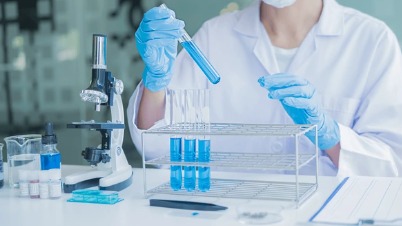Chemical Handling Techniques: Ensuring Safety in the Lab
Working with chemicals is a fundamental aspect of many scientific and industrial fields. Whether in a research laboratory, manufacturing plant, or educational setting, handling chemicals requires strict adherence to safety protocols to protect both individuals and the environment. Here are some essential techniques and best practices for safe chemical handling.
1. Understanding the Chemicals
Before handling any chemical, it is crucial to understand its properties, potential hazards, and safe handling requirements. This information can typically be found in the Safety Data Sheet (SDS) for each chemical, which provides details on toxicity, flammability, reactivity, and proper storage conditions. Familiarizing yourself with the SDS helps in anticipating and mitigating potential risks.
2. Personal Protective Equipment (PPE)
Personal Protective Equipment (PPE) is a critical component in protecting individuals from chemical exposure. Depending on the nature of the chemicals involved, appropriate PPE may include:
Gloves: To protect hands from corrosive, toxic, or irritating substances.
Goggles or Face Shields: To protect eyes from splashes, vapors, or dust.
Lab Coats or Aprons: To protect skin and clothing from spills.
Respirators or Masks: For protection against inhalation of hazardous fumes or particles.
Selecting the right PPE for the specific chemicals being handled is essential.
3.Proper Storage and Labeling
Chemicals must be stored correctly to prevent accidents such as spills, leaks, or reactions. Key considerations include:
Segregation: Store incompatible chemicals separately to prevent dangerous reactions. For instance, acids and bases should be stored apart.
Temperature Control: Some chemicals require specific temperature conditions to remain stable. Ensure that storage areas are appropriately temperature-controlled.
Ventilation: Store volatile chemicals in well-ventilated areas to prevent the buildup of harmful vapors.
Labeling: Clearly label all chemical containers with the name, concentration, hazards, and date of receipt. Proper labeling helps in quickly identifying chemicals and understanding the associated risks.
4. Handling and Transfer Procedures
When transferring chemicals from one container to another, use proper techniques and equipment to minimize the risk of spills or exposure.
Key points include:
Use of Fume Hoods: Conduct procedures that produce vapors, dust, or aerosols inside a fume hood to prevent inhalation.
Proper Tools: Use appropriate tools such as pipettes, funnels, or pumps for transferring chemicals to avoid direct contact and spills.
Double-Checking: Always double-check that the container and tools are clean and dry before use, as contamination can lead to dangerous reactions.
5. Emergency Preparedness
Despite best efforts, accidents can happen. Being prepared for emergencies is crucial:
Spill Kits: Have spill kits readily available in the event of a chemical spill. Kits should include absorbent materials, neutralizing agents, and PPE.
Eye Wash Stations and Safety Showers: Ensure that eye wash stations and safety showers are accessible and functional. These facilities provide immediate decontamination in case of exposure.
First Aid Training: Personnel should be trained in first aid and emergency response procedures specific to chemical exposure.
6. Training and Education
Ongoing training and education are vital in maintaining a safe working environment. Regular safety training sessions help personnel stay up-to-date with the latest safety practices and regulatory requirements. Encouraging a culture of safety ensures that everyone understands the importance of proper chemical handling and feels empowered to report unsafe conditions.
Conclusion
Safe chemical handling is a shared responsibility that requires vigilance, knowledge, and the proper use of equipment and procedures. By adhering to these best practices, we can minimize the risks associated with chemical use and create a safer environment for everyone involved. Remember, safety is not just a priority—it’s a continuous commitment.



